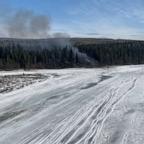Should Bridges Come With Warning Labels?
Weight limit signs indicate a bridge is in trouble, but are they enough?
Aug. 4, 2007 — -- As questions about how the I-35W bridge collapsed Wednesday in Minneapolis remain unanswered, people across the U.S. are wondering how to tell if the bridges they travel everyday are safe.
States and municipalities have a responsibility to inform motorists about a span's potential problems, Nick Coleman wrote in a an column in the Minneapolis-St. Paul StarTribune. Noting that the collapsed bridge was classified "structurally deficient" and received a 50 percent rating on a state report, Coleman asked: "Would you drive your kids or let your spouse drive over a bridge that had a sign saying, "CAUTION: Fifty-Percent Bridge Ahead"?
Warnings are everywhere these days, from hot cups of coffee to neighborhood sex-offender alerts. Why not bridges?
Authorities contacted by ABC News.com dismissed such an idea as ineffective.
"I think the idea of signs is absurd," said John Hooks, director of the Bridge Management Information Systems Laboratory at the U.S. Department of Transportation's Turner-Fairbank Highway Research Center.
"The average driver wouldn't understand anything that was meaningful, that would really indicate if the bridge was safe. Even saying 'structurally deficient' wouldn't help much. Structurally deficient very infrequently means the bridge is in danger of any collapse. It is an administrative tool to determine if federal funds should be used for repairs. It indicates a level of condition, but doesn't directly reflect the risk of collapse," he said.
Furthermore, he said, there already are signs that indicate whether a bridge is in poor condition.
"Bridges that can't handle the legal load limit have signs. Load limits mean a bridge has a condition problem or was designed a long time ago, before the legal load limit was increased. Load limits are easily understood by laymen and engineers," he said.
Enforcement of the current load limit signs, and not new signs are the answer to keeping bridges safe, said Robert Sinclair, a spokesman for the American Automobile Association.




